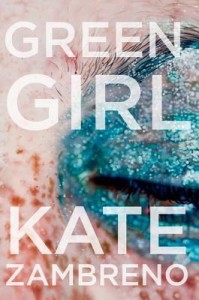 There is a vaguely Faulknerian mood to this strange novel. In Faulkner’s work, dim-witted, almost subhuman characters passively bump their ways around Yoknapatawpha County. As a traditionalist, I’m not a fan of passive, aimless characters behaving pointlessly, but at least in Faulkner, you have those beautiful sentences to keep you going.
There is a vaguely Faulknerian mood to this strange novel. In Faulkner’s work, dim-witted, almost subhuman characters passively bump their ways around Yoknapatawpha County. As a traditionalist, I’m not a fan of passive, aimless characters behaving pointlessly, but at least in Faulkner, you have those beautiful sentences to keep you going.
In Green Girl, the main character, Ruth, is a vapid and emotionally chaotic 20-year-old American working at a department store in London. She has no interests, no values, no motivation, no reasoning power, barely language, and ironically, no clear desire (the name of the perfume she sprays on guests entering the store). She is utterly unlikeable, which would be fine if we could learn something from her. She stumbles, half-blind, through a fog of sensory and emotional confusion. Nothing happens; there is no plot. She never changes; there is no character development.
Is there redeeming lyrical prose? I think the author reached for it, but missed. The style of writing could be construed as prose poetry, but if that was the intent, it leaves me less than satisfied.
Example: Ruth is conflicted about her desire for social admiration versus her contempt for the superficiality of lookism, so she has this thought balloon:
“Look at me
(don’t look at me)
Look at me
(don’t look at me)
Look at me don’t look at me look at me look at me don’t look at me don’t look
(Look)
(Don’t look)
I can’t stand it if you don’t look
Look
Look
Please
Stop”
I guess that’s kind of poetic. At least the typography is. But does it convey anything beyond itself? Is it insightful? Some readers might find it Joycean. I found it so banal and clichéd that I cringed at the author’s attempt. The book is full of such painful examples. Perhaps others will read them more generously than I could.
If I wanted to write a portrait of an unformed person, one who had not yet come to self-awareness, I think I would reach deeper than this. Ruth’s thoroughgoing superficiality is an insult to adolescents. If she were 12 years old, rather than 20, her inner seething might be more convincing (though no more interesting). It just wasn’t believable to me that a 20-year-old, not obviously brain-damaged, developmentally impaired, or mentally ill person could be so hollow. In Yoknapatawpha County, you make allowances because it’s Mississippi hill country in the 1920’s. But here in contemporary, working-class London?
Some female reviewers have gushed that Zambreno absolutely captured their adolescent experience. I am shocked if that is not hyperbole. But maybe I’ve lived a sheltered life. What do I know?
There are moments of keen observational writing in here, but they are more than offset by mind-numbing repetition and banality.
Zambreno, Kate (2011/2014).Green Girl. New York: Harper Perennial (275 pp).

Pingback: Non-Nutritional Novels | Can't Stop Writing...